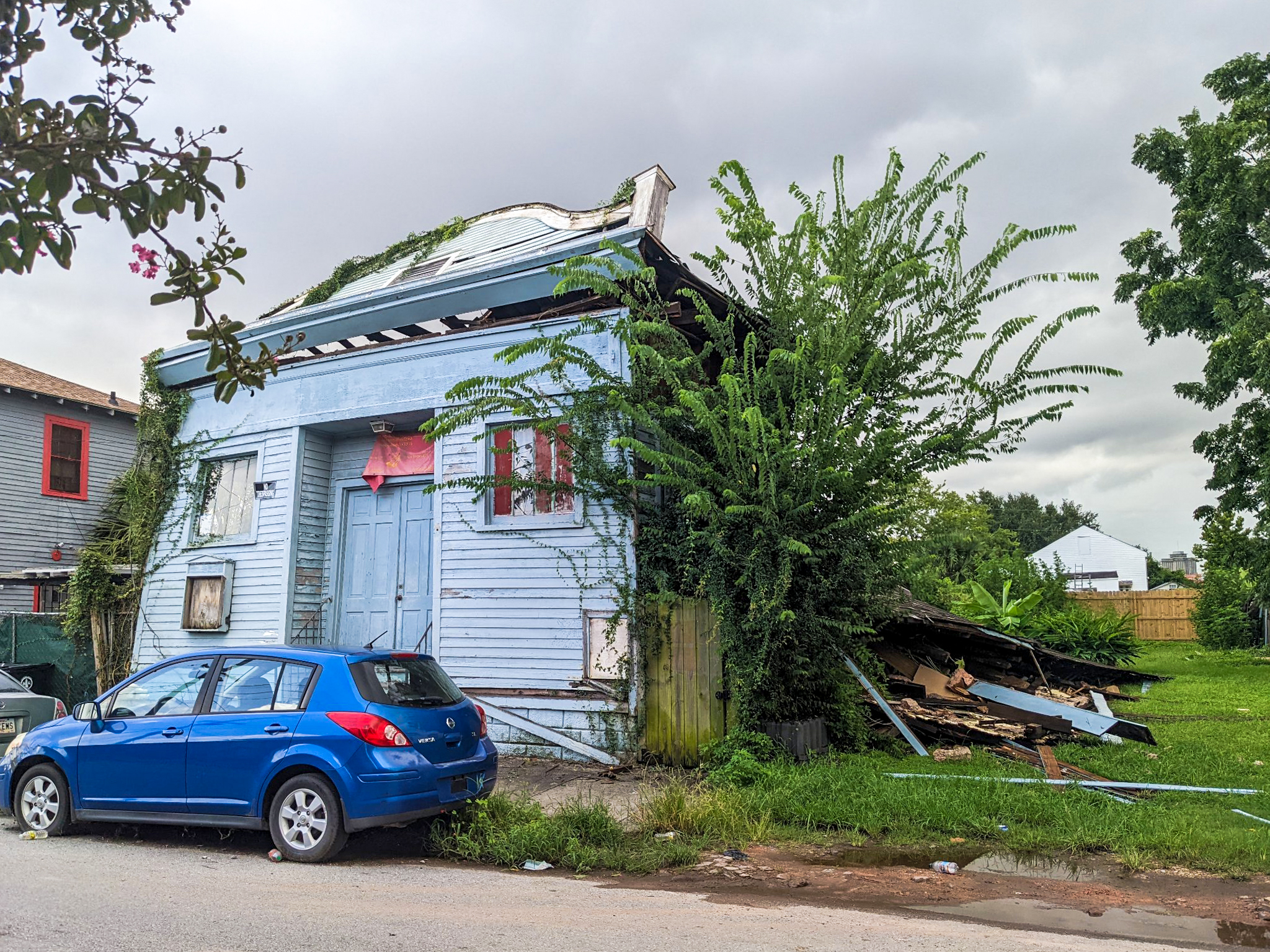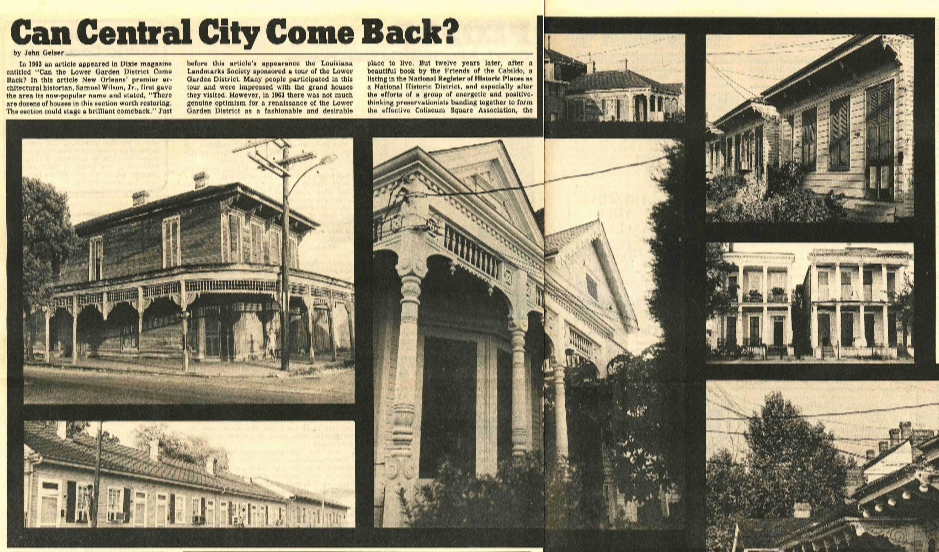Nearly three years to the day after Hurricane Katrina assaulted New Orleans, Hurricane Gustav came knocking at the door. And although Gustav made landfall some 80 miles southwest of New Orleans and gave the city only a glancing swipe, preservationists say its winds may have enabled Mayor Ray Nagin to strike a devastating blow.
Using the state of emergency declared for Gustav on August 28, 2008, Nagin has issued an executive order that suspends entirely the portion of the City Code that establishes and details the behavior of the Neighborhood Conservation District Committee (NCDC). Created after homeowners began suing the city in 2007, alleging homes were demolished without their knowledge, the NCDC reviews all demolition requests in the Housing Conservation Districts (HCDs), which roughly align with the National Register areas. The NCDC is a largely community-led committee; it replaced the city-controlled Housing Conservation District Review Committee that critics had asserted was lackadaisical and fraught with procedural errors.
“Basically, the Mayor declared himself king of the wrecking balls,” says Matt McBride, the citizen-activist and self-styled demolition watchdog who noticed the flurry of unexpected demos that followed the order, “and it appears he’s going to rebuild the city by tearing it down.”
With this open-ended order, says New Orleans National Trust Field Office Director Walter Gallas, Nagin essentially opened the floodgates on demolitions in National Register districts with no notice to the citizens of New Orleans – including the properties’ owners. As architectural firm Praxis Design LLC noted in a Sept. 10 letter to members of citizen group Neighbors United, “This executive order allows Safety and Permits to issue demolition permits over the counter.” The letter went on to inform Neighbors United that demolition of 2301 Valmont Street, a historic property the group hopes to save from becoming a parking lot, “would begin as soon as possible.” That house has been the centerpiece of a months-long fight between residents and its owner; it had previously come before the NCDC and received a de facto denial (by virtue of an expiring deferral) on Sept. 5 – the day of Nagin’s executive order.
A New State of Emergency
The 1920s Craftsman at 2301 Valmont Street was one of 13 NCDC-eligible private demolition permits issued to property owners beginning Tuesday, Sept. 9. The city initiated permits on another 40 eligible properties without owner input. Twenty-four came directly from the Sept. 2 agenda of the NCDC, a meeting that never occurred due to Gustav.
Opponents of the order say it was inappropriate and unnecessary, not only because there is no “state of emergency” (Gustav caused little damage overall and Nagin lifted all curfews Sept. 9), but because imminent danger of collapse (IDC) properties already avoid NCDC review. The city had already issued, or was in the process of issuing, more than 100 permits for IDC structures at the time of the order.
Within 24 hours of McBride’s discovery, City Council members were reassuring concerned citizens via email that Safety and Permits officials acknowledged the loopholes and would close them. City officials did not respond to requests for confirmation, but one city representative, speaking on condition of anonymity, says, “The executive order suspending review of properties in the Housing Conservation Districts led to unintended consequences of people skirting the review process for properties that would likely have been denied demo permits.”
Preservationists and concerned residents relaxed a bit, waiting for the promised update, but as of Thursday evening, Sept. 11, no such action had occurred. The tension became palpable as a flurry of e-mails began crisscrossing the city. “The City Council should declare its own ‘state of emergency’ – about how legitimate city processes are being gutted by the mayor,” stated local preservation icon Nathan Chapman in an open letter to area residents. “Defend our National Register Districts! Defend neighborhoods in their right to participate!” said a forum posting by the Preservation Resource Center of New Orleans.
A Gauntlet Thrown?
Then, late yesterday, despite its prior assurances, the city issued 11 more demolition permits for NCDC-eligible properties. Seven were for properties that either never appeared before the NCDC, were withdrawn at a previous NCDC meeting and never reintroduced, or denied and not appealed. “In issuing these permits, the mayor has thrown down the gauntlet and declared that his judgment in matters of property rights and historic preservation is superior to all others,” says McBride.
“Apparently, the mayor thinks any time he sees a storm coming at the same time he is in a sticky legal wicket, he can declare an emergency and then bypass any law,” stated McBride in an e-mail sent to City Council members and preservationists on Sept. 12. “If a line in the sand is not drawn now, the City Council will be toothless to stop this mayor or any other mayor from pulling this same stunt. This is about way more than houses. It is about citizens’ property rights. And it is about the balance of power within your government.”
Gallas considers this part of a pattern of behavior he considers “very troublesome,” pointing to the city’s oft-stated determination to raze some 150-plus National Register-listed historic homes in order to clear the way for two new hospitals. He also finds serious fault with the city’s overall tactics. “The imminent danger houses being demolished after Gustav should have been taken down by the city long ago,” he says. “We’ve been asking them for years, ‘Do the worst first and work with the neighborhoods to identify the properties of concern to them,’ but they don’t want to do that.”
With Nagin’s latest act, Gallas’ frustration is palpable. “The NCDC was newly constituted, the process was finally working, and now the mayor has pulled the plug on that. For anyone hoping to preserve the city, the question is becoming, ‘Will the mayor ever understand the threat his own decisions pose for the city’s historic resources?'”
Carolyn Bennett, director of the Baton-Rouge-based Foundation for Historical Louisiana, says. “I am appalled. Hurricane Gustav battering Baton Rouge has reminded me that cherished properties and great landscapes can be demolished overnight by Mother Nature. Shouldn’t this make our leaders more sensitive to historic neighborhoods? Wouldn’t this give one an additional reason to protect the built environment that thankfully remains? Or is it an excuse to give free reign for premeditated wishes?”
Jennifer Farwell is a New Orleans writer who lives in the Mid-City neighborhood.





